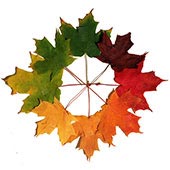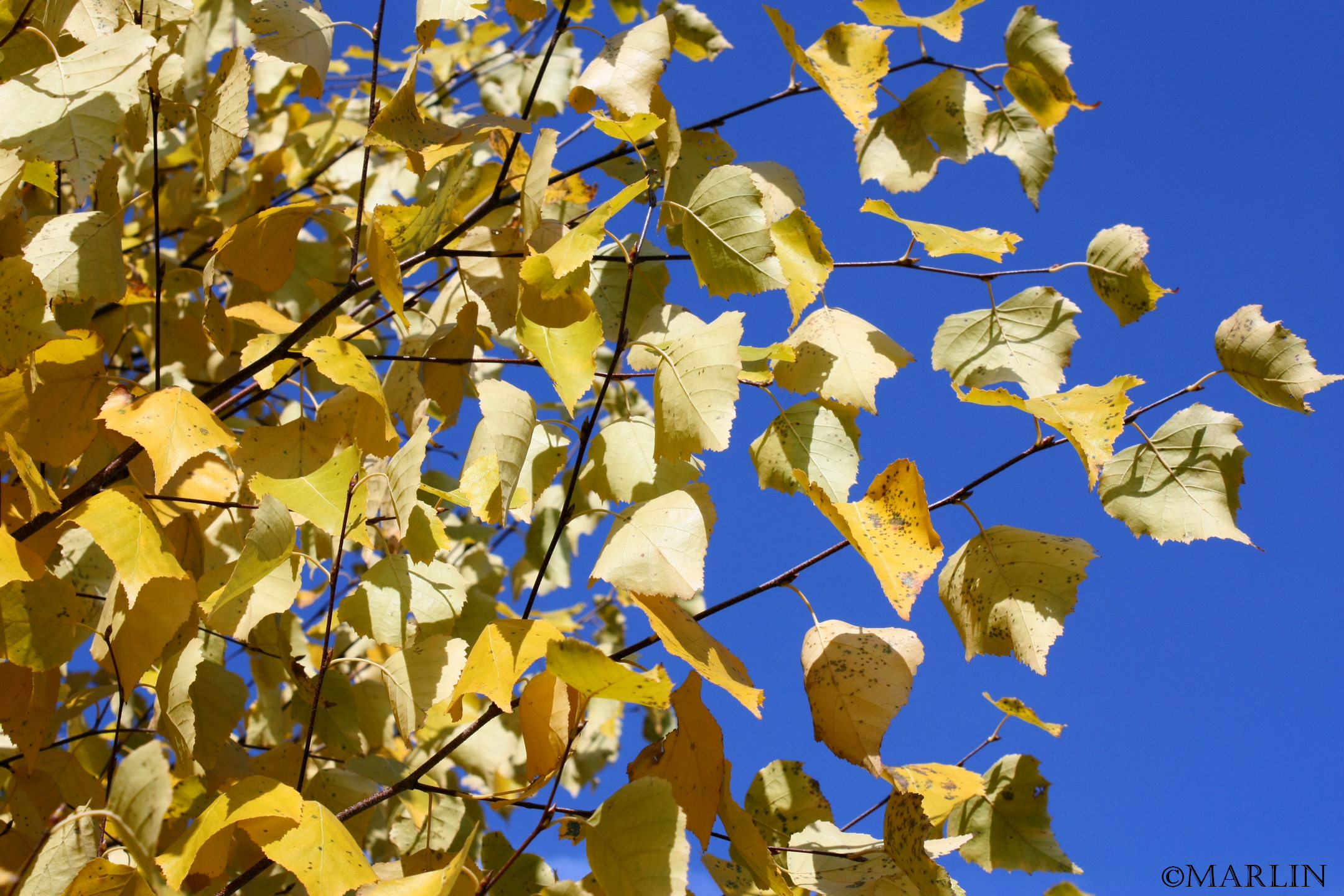Family Betulaceae – Alder, Birch & Hornbeam
Betulaceae belongs to an ancient lineage, traceable in the fossil record to the upper Cretaceous, 140 million years ago. They are easily distinguished by their woody habit; simple, pinnately veined, usually ovate, sharp-toothed leaves.
Betulaceae – The Birch Family: The Betulaceae family includes about 6 genera and over 150 species of deciduous trees and shrubs. Native to temperate and boreal regions of the Northern Hemisphere, members of this family are characterized by simple, alternate leaves with serrated margins, and wind-pollinated catkin flowers. Notable genera include Betula (birches), Alnus (alders), Corylus (hazels), and Carpinus (hornbeams). These plants often play important ecological roles in forest succession and soil stabilization, and several species are valued for timber, nuts, or ornamental use.
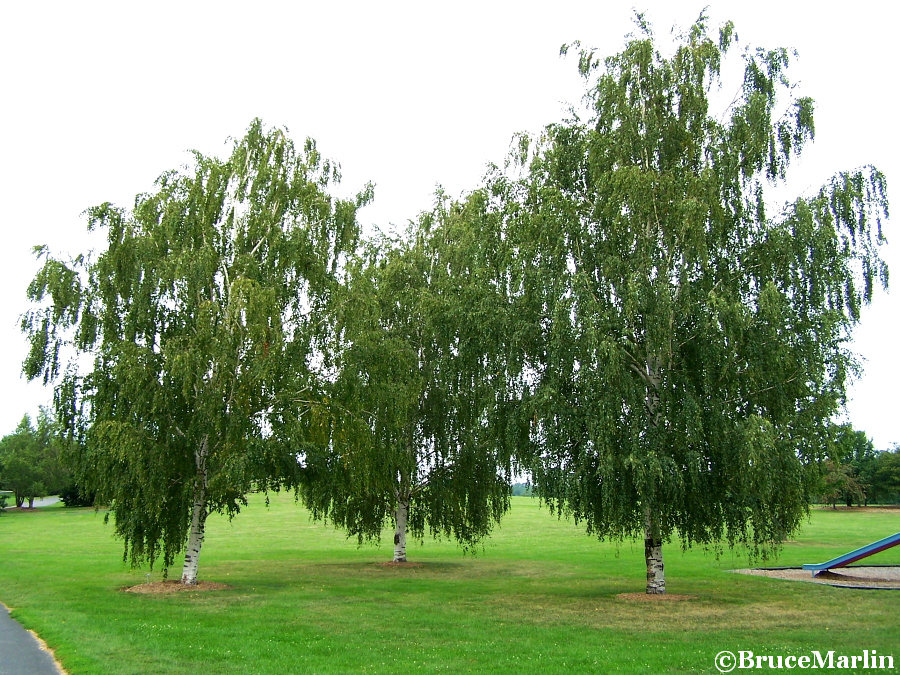
Archetypical white birch is an outstanding specimen or ornamental landscape tree
White Birch – Betula papyrifera: White Birch, also known as Paper Birch, is a medium-sized deciduous tree native to northern North America. It is easily recognized by its striking white, peeling bark and triangular, toothed leaves. This species thrives in cool climates and is often one of the first trees to colonize disturbed sites, making it an important pioneer species. White Birch produces both male and female catkins, with wind-dispersed seeds that support forest regeneration. Historically, Indigenous peoples used its bark for canoes, containers, and roofing due to its waterproof qualities.
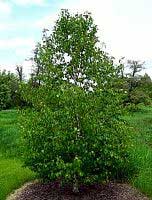 Japanese White Birch |
Dahurian Birch |
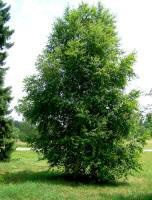 European White Birch |
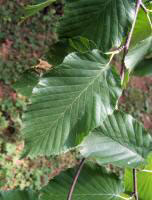 Sweet Birch |
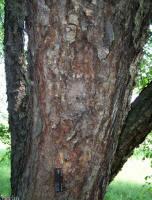 River Birch |
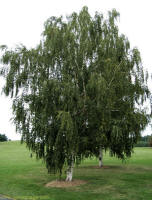 Paper Birch |
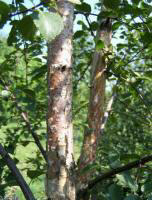 Arctic Moor Birch |
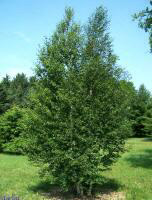 Downy / Moor Birch |
Birch grows in climates ranging from boreal to humid and tolerates wide variations in precipitation. Its northern limit of growth is arctic Canada and Alaska, in boreal spruce woodlands, in mountain and sub alpine forests of the western United States, the Great Plains, and in coniferous – deciduous forests of the Northeast and Great Lakes states.
The group is sometimes divided into two families, Betulaceae ( Alnus and Betula ) and Corylaceae (Carpinus , Ostrya , Corylus , and Ostryopsis), especially in Europe. In America, this treatment has been followed by A. J. Rehder (1940), J. K. Small, and a few others.
Some of those writers have based their recognition of two families in part on the belief that a fundamental difference exists in the staminate inflorescences of the two groups. This view is no longer widely accepted, and most modern authors maintain the family as a single group composed of two subfamilies, Betuloideae and Coryloideae.” [1]
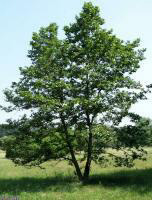 Manchurian Alder |
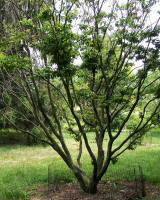 Loose-Flowered Hornbeam |
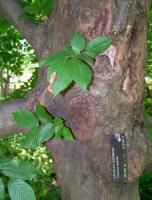 European Hornbeam |
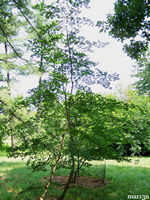 Turczaninov Hornbeam |
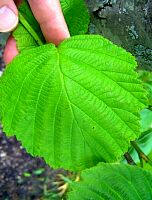 Siberian Alder |
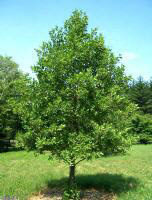 European Black Alder |
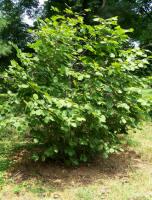 Manchurian Hazelnut |
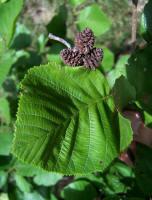 Speckled Alder |
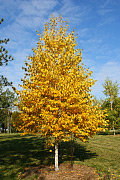 Asian White Birch |
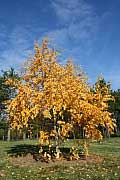 Manchurian Birch |
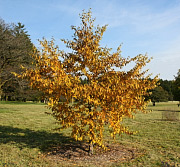 Schmidt’s Birch |
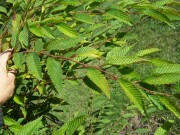 Japanese Hornbeam |
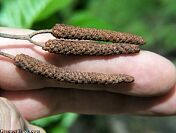 Pyramidal Black Alder |
European White Alder |
American Hornbeam |
Alders are monoecious, that is, they have both sexes present on the same plant. Long, hanging male catkins are produced in the early winter then release pollen the following spring. Tiny female catkins appear at the shoot tips in early spring. These female catkins ripen to form green, woody conelets that after fertilization ripen into open cone-like structures called strobiles, from which the seeds are released.
Corylus – Hazels: Corylus is a genus of deciduous shrubs and small trees found across the temperate Northern Hemisphere. Members are best known for producing edible nuts, commonly called hazelnuts or filberts. The plants have rounded, serrated leaves and bear separate male and female flowers on the same plant—males in prominent catkins and females as tiny, budlike flowers with red styles. Corylus avellana (European hazel) and Corylus americana (American hazel) are widely recognized species, both valued for their nuts, wildlife support, and ornamental appeal. Hazels prefer well-drained soils and partial sun and are often found in woodland edges or hedgerows.
Carpinus – Hornbeams: Carpinus includes small deciduous trees found in temperate forests of the Northern Hemisphere. They are known for smooth, fluted trunks and hard, dense wood. Leaves are sharply toothed and turn yellow in fall. Flowers appear in catkins; fruit is a small nut with a papery bract. Carpinus caroliniana (American hornbeam) is common in moist woods and valued in landscaping for its shade tolerance and tidy form.
Ostrya – Hop-hornbeams: Ostrya is a small genus of deciduous trees native to North America, Europe, and Asia. They resemble hornbeams but are distinguished by their shaggy bark and fruit that resembles hops. Leaves are doubly serrated and similar to those of Carpinus. Ostrya virginiana (Eastern hop-hornbeam) is common in dry, upland woods and produces tough, durable wood once used for tool handles and fence posts.
American Hornbeam – Carpinus caroliniana
Arctic Moor Birch – Betula pubescens subspecies tortuosa
Asian White Birch – Betula platyphylla
Dahurian Birch – Betula davurica
Downy Birch – Betula pubescens
European Black Alder – Alnus glutinosa
European Hornbeam – Carpinus betulus
European White Alder – Alnus incana
European White Birch – Betula pendula – syn. Betula verrucosa
Family Betulaceae – Alder, Birch & Hornbeam
Japanese Hornbeam – Carpinus japonica
Japanese White Birch – Betula platyphylla var. japonica
Loose-Flowered Hornbeam – Carpinus laxiflora var. macrostachya
Manchurian Alder – Alnus hirsuta
Manchurian Birch – Betula platyphylla var. mandshurica
Manchurian Hazelnut – Corylus sieboldiana var. mandshurica
Paper Birch – Betula papyrifera
Pyramidal Black Alder – Alnus glutinosa ‘Pyramidalis’
Schmidt’s Birch – Betula schmidtii
Siberian Alder – Alnus hirsuta var. sibirica
Turczaninov Hornbeam – Carpinus turczaninovii
White Birch Tree – Betula papyrifera
White Satin Birch – Betula ‘White Satin’
References
1. Missouri Botanical Garden. (n.d.). Betula papyrifera (paper birch).
2. USDA Forest Service. (n.d.). Betula papyrifera.
3. Kew Science – Plants of the World Online. (n.d.). Betula papyrifera Marsh
4. USDA NRCS Plants Database. (n.d.). Alnus – Alders
5. Encyclopedia of Life. (n.d.). Alnus.
6. Flora of North America. (n.d.). Corylus
